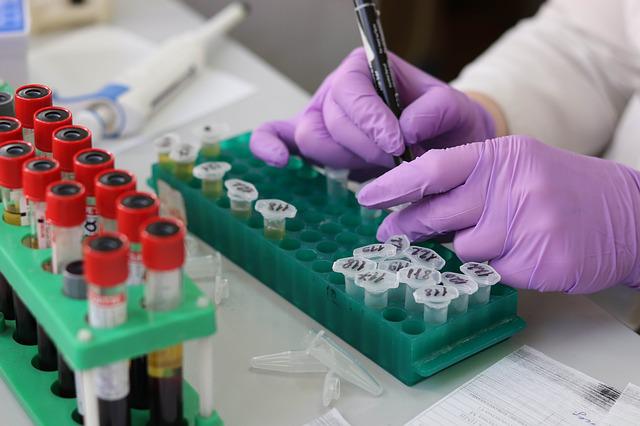Test Amit sep
The Group 17 Elements - Halogens

The halogens (Group 17 ) are a group of elements in the periodic table comprising fluorine (F), chlorine (Cl), bromine (Br), iodine (I), and astatine (At). They are highly reactive non-metal elements that are located in Group 17 (also known as VIIA) of the periodic table. They are known for their ability to form strong bonds with other elements and for their strong oxidizing properties.
Halogens mean salt former. All halogens react directly with metals to gorm salt and are also very reactive with non-metals.
The halogens (Group 17 ) are a group of elements in the periodic table comprising fluorine (F), chlorine (Cl), bromine (Br), iodine (I), and astatine (At). They are highly reactive non-metal elements that are located in Group 17 (also known as VIIA) of the periodic table. They are known for their ability to form strong bonds with other elements and for their strong oxidizing properties.
Halogens mean salt former. All halogens react directly with metals to form salt and are also very reactive with non-metals.
Table: Electronic structure and oxidation states of halogens
| Elements | Electronic configuration | Oxidation States |
| Fluorine (F) | [He] 2s2 2p5 | -1 |
| Chlorine (Cl) | [Ne] 3s2 3p5 | -1, +1, +3, +4, +5, +6, +7 |
| Bromine (Br) | [Ar] 3d10 4s2 4p5 | -1, +1, +3, +4, +5, +6 |
| Iodine (I) | [Kr] 4d10 5s2 5p5 | -1, +1, +3, +5, +7 |
| Astatine (At) | [Xe] 4f14 5d10 6s2 6p5 |
What is gorm salt?
A halogen salt is a chemical compound that contains a halogen (such as chlorine, bromine, or iodine) combined with a metal or another non-metal element. Some common examples of halogen salts include sodium chloride (NaCl), calcium chloride (CaCl2), and magnesium bromide (MgBr2). These salts are typically used in various industrial and household applications, such as water treatment, food preservation, and road de-icing.
Fluorine (F) is a chemical element with atomic number 9 and is a member of the halogen group in the periodic table. It is a highly reactive, pale yellow, non-metallic gas that is the most reactive of all the elements. Fluorine (F) has the highest electronegativity of all elements, which means it strongly tends to attract electrons. Due to its reactivity, Fluorine (F) is never found in its elemental form in nature and must be produced through the electrolysis of hydrofluoric acid or the reaction of fluorine gas with other elements.
Fluorine has many uses in industry, including the production of fluorocarbons for refrigerants and fire extinguishers, as well as the production of fluorine-containing compounds for oil refining and the production of pharmaceuticals. Additionally, it is added to water supplies to prevent tooth decay in a process known as fluoridation.
Fluorine (F) has a wide range of industrial uses due to its unique chemical properties. Some of the most important industrial applications of fluorine include:
- Refrigerants: Fluorine is used to produce fluorocarbons, used as refrigerants in air conditioning and refrigeration systems.
- Fire extinguishers: Fluorine-containing compounds, such as halon, are used as fire extinguishing agents due to their ability to extinguish fires by inhibiting chemical reactions.
- Oil refining: Fluorine is used in the production of various chemicals that are used in the refining of petroleum, such as alkylates and gasoline additives.
- Pharmaceuticals: Fluorine is used to synthesize a wide range of pharmaceuticals, including anti-inflammatory drugs, antidepressants, and cancer treatments.
- Water treatment: Fluorine is added to drinking water in some countries to help prevent tooth decay in a process known as fluoridation.
- Semiconductor industry: Fluorine is used in the production of semiconductors, as it can improve the properties of silicon, which is the main material used to manufacture computer chips.
These are some of the major industrial uses of fluorine. In addition, its unique chemical properties, including high reactivity and electronegativity, make it a versatile and valuable element in various industries.
Chlorine (Cl) is a chemical element with atomic number 17 and is a member of the halogen group in the periodic table. It is a highly reactive, yellow-green gas at room temperature and pressure and has a strong, characteristic odor. Chlorine is a powerful oxidizing agent used to produce a wide range of products, including bleach, disinfectants, and water purifiers.
Chlorine is also used to produce many industrial chemicals, including PVC (polyvinyl chloride) plastics, refrigerants, and solvents. In addition, it is used to treat drinking water and swimming pool water to kill harmful bacteria and microorganisms. However, exposure to high chlorine gas levels can harm human health, causing respiratory and eye irritation, as well as more serious health effects such as coughing, wheezing, and difficulty breathing.
Chlorine (Cl) has a variety of important industrial uses due to its unique chemical properties:
- Water treatment: Chlorine is widely used to treat drinking water and swimming pool water to destroy harmful bacteria and microorganisms.
- Disinfectants: Chlorine is a key ingredient in producing a variety of disinfectants and sanitizers, which are used to kill germs in homes, hospitals, and other public spaces.
- Bleaching agents: Chlorine is used in producing bleaching agents for wood pulp, textiles, and other materials, to remove color and brighten the final product.
- Plastics: Chlorine is used in producing PVC (polyvinyl chloride) plastic, a versatile and widely used material.
- Solvents: Chlorine is used in the production of chlorinated solvents, which are used in a wide range of industrial and household applications, including cleaning and degreasing.
- Fire retardants: Chlorine is used in the production of fire retardants, which are added to materials to slow or prevent the spread of fire.
- Agricultural chemicals: Chlorine is used in the production of a variety of agricultural chemicals, including insecticides, herbicides, and fungicides.
These are some of the major industrial uses of chlorine. Its unique chemical properties, including high reactivity and strong oxidizing ability, make it a valuable and versatile element in many industries.
Bromine (Br) is a chemical element with atomic number 35 and is a member of the halogen group in the periodic table. It is a reddish-brown liquid at room temperature and pressure and has a strong, disagreeable odor. Bromine is highly reactive and is used in producing many products, including flame retardants, agricultural chemicals, and oil well drilling fluids.
Bromine is also used in the making of certain pharmaceuticals, including sedatives and anti-inflammatory drugs, as well as in the synthesis of dyes, perfumes, and other organic compounds. However, exposure to high bromine levels can harm human health, causing skin and eye irritation, as well as more serious health effects such as respiratory distress and vomiting.
Bromine (Br) has a number of important industrial uses due to its unique chemical properties:
- Fire retardants: Bromine is used in producing fire retardants, which are added to materials such as plastics, textiles, and electronic components to slow or prevent the spread of fire.
- Pesticides: Bromine is used in the production of a variety of pesticides, including insecticides, herbicides, and fungicides.
- Oil refining: Bromine is used in producing chemicals used in refining petroleum, such as brominated flame retardants and drilling fluids.
- Water treatment: Bromine is used in water treatment processes as a substitute for chlorine in some applications.
- Pharmaceuticals: Bromine is used in the synthesis of a variety of pharmaceuticals, including sedatives, anxiolytics, and anti-inflammatory drugs.
- Photoinitiators: Bromine is used in producing photoinitiators, compounds that start a chemical reaction when exposed to light.
These are some of the major industrial uses of bromine. In addition, its unique chemical properties, including high reactivity and intermediate electronegativity, make it a valuable and versatile element in many industries.
Iodine (I) is a chemical element with atomic number 53 and is a member of the halogen group in the periodic table. It is a shiny, purple-black solid at room temperature and pressure. Iodine is highly reactive and is used in the production of a number of products, including antiseptics, radiation-absorbing materials, and dyes.
Iodine is also an essential nutrient for the human body and is required to produce thyroid hormones, which regulate metabolism and help maintain healthy growth and development. A lack of iodine in the diet can result in a condition known as hypothyroidism, which can affect a range of health problems, including fatigue, weight gain, and impaired cognitive function. Iodine is commonly found in seaweed, seafood, and dairy products and is added to salt in many countries to help prevent iodine deficiency disorders.
Iodine (I) has a number of important industrial uses due to its unique chemical properties:
- Medical uses: Iodine is used to produce various medical and pharmaceutical products, including antiseptics, disinfectants, and radiocontrast agents.
- Animal feed: Iodine is added to animal feed to ensure proper thyroid function and growth.
- Food and agriculture: Iodine is used in the production of food additives and agricultural chemicals, such as potassium iodide and calcium iodate.
- Dyes and pigments: Iodine is used in the production of dyes and pigments and in the preparation of printing inks.
- Synthetic organic compounds: Iodine is used as a catalyst or reagent in the synthesis of a variety of organic compounds.
- Analytical chemistry: Iodine is used in analytical chemistry as a stain or reagent for various purposes, including the detection of starch and lipids.
These are some of the major industrial uses of iodine. In addition, its unique chemical properties, including high reactivity and intermediate electronegativity, make it a valuable and versatile element in many industries.
Astatine (At) is a chemical element with atomic number 85 and is a member of the halogen group in the periodic table. It is a highly radioactive, synthetic element with no stable isotopes and has only been produced in tiny amounts for scientific research. In addition, Astatine has a very short half-life, which means it quickly decays into other elements and is highly dangerous to handle.
Due to its radioactivity and instability, astatine has limited practical applications. However, scientists have explored its potential use in cancer treatment, as it has been shown to target and destroy cancer cells while having limited effects on healthy tissue. Additionally, astatine has been used in nuclear and atomic research to study the behavior of radioactive elements and their interactions with other materials.
Astatine (At) is a highly radioactive element, and as such, it has limited industrial uses due to its radioactivity and short half-life. However, it has some potential uses in the fields of medicine and nuclear research.
- Medical uses: Astatine has been proposed for use in targeted radiation therapy for cancer due to its high radioactivity and short half-life.
- Nuclear research: Astatine has been used in nuclear research to study the behavior of radioactive elements and their decay processes.
These are some of the potential industrial uses of astatine. However, due to its highly radioactive nature and short half-life, its use is limited and careful precautions must be taken to handle and transport it safely.



Please Sign In or Sign Up to leave a Comment.